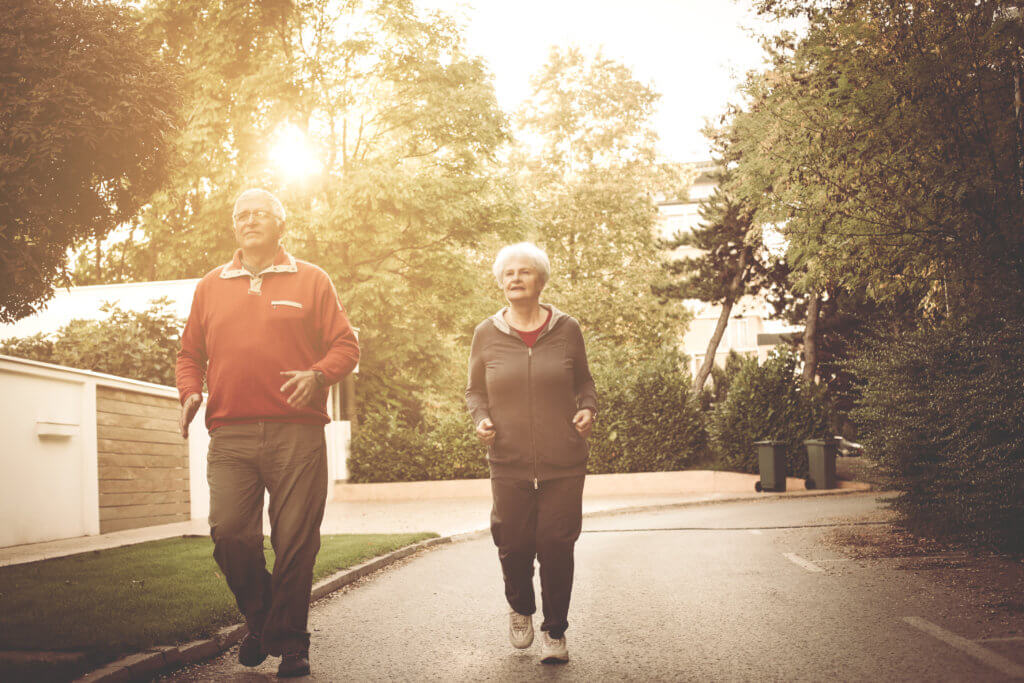DUBLIN, Ireland — A new study suggests that living in a safer neighborhood can have a greater impact on weight loss than how close your home is to a gym or grocery store. Factors such as inadequate street lighting, groups of loitering children, and heavy traffic all have an association with difficulties losing weight, researchers add.
Although lifestyle interventions like dieting and exercise are crucial in addressing obesity, the influence of one’s neighborhood on weight loss remains largely unexplored. The recent study delved into this by investigating 122 individuals living with obesity, with 74.6 percent being women with an average BMI of 39. Participants took part in a lifestyle intervention involving dietary advice, exercise, and cognitive behavioral therapy. Researchers analyzed the relationship between neighborhood characteristics and changes in participants’ waist circumference and weight over an 18-month period.
Prior to the program, participants completed a questionnaire assessing various aspects of their neighborhood. Five key factors were neighborhood safety, attractiveness, social cohesion, and accessibility to both grocery stores and sports facilities.
Safety took into account fears of crime or harassment and the comfort level of walking or cycling in high-traffic areas. This category also considered the adequacy of street lighting in the evenings and at night, and any concerns about loitering youths. Attractiveness assessed the presence of trees and parks, as well as general cleanliness. Social cohesion examined feelings of loneliness in the neighborhood, the level of interaction among neighbors, and their willingness to help one another.
The study authors report that a one-point increase in the neighborhood safety scores had a connection with a 1.3-percent greater initial weight loss after the first 10 weeks. In the long term, safety was associated with an average decrease of 3.2 percent in weight and an average reduction of 2.6 percent in waist circumference.

Researchers measured the participants’ height, weight, and waist circumference at the program’s onset, after 10 weeks, and again after 18 months. The results show that those in safer neighborhoods experienced the most weight loss and reduced waist circumference at both the 10-week and 18-month marks.
“There are several possible reasons why neighborhood safety is important. People may be less willing to go outside if they feel unsafe, resulting in them having less physical activity,” says Boëlle Brouwer of the University Medical Center Rotterdam in a media release. “Another explanation could be that feelings of insecurity increase levels of stress which can contribute to unhealthy eating behavior and weight gain. We also cannot rule out that neighborhood safety is associated with other factors, e.g. poverty, which may be important for the association we found.”
The study also found that a one-point increase in social cohesion tended to result in an average decrease of 1.3 percent in waist circumference during the first 10 weeks.
“In general, it is known that social cohesion can provide social support and motivation to participants. Feeling connected to and supported by people in your surroundings can increase adherence to healthy behaviors and improve overall outcomes of lifestyle interventions,” said Brouwer.

However, the team did not find a significant association between social cohesion and long-term changes in weight and waist circumference. There was a potential correlation between neighborhood attractiveness and long-term weight loss and waist circumference changes.
“Our results indicate that if you feel unsafe where you live, it may reduce your chances of successful weight loss in response to combined lifestyle interventions. We need more research to determine how neighborhood safety may affect weight and waist circumference and if feelings of safety are linked to other factors such as housing, stress or poverty,” Brouwer continues.
“We often focus on individuals in the context of a lifestyle intervention for persons with obesity. In this study we found indications that the social and physical environment they live in may play a role in the success of the intervention, although we need more research to see whether this is causally related,” adds study co-author Elisabeth van Rossum, a professor from the University Medical Center Rotterdam.
“If it turns out that these environmental and social factors indeed are drivers of the success of a guided lifestyle intervention, then we need to study to what extent this also applies to individuals who try to lose weight by themselves.”
The study authors presented their findings at the European Congress on Obesity in Dublin, Ireland.
South West News Service writer Alice Clifford contributed to this report.

